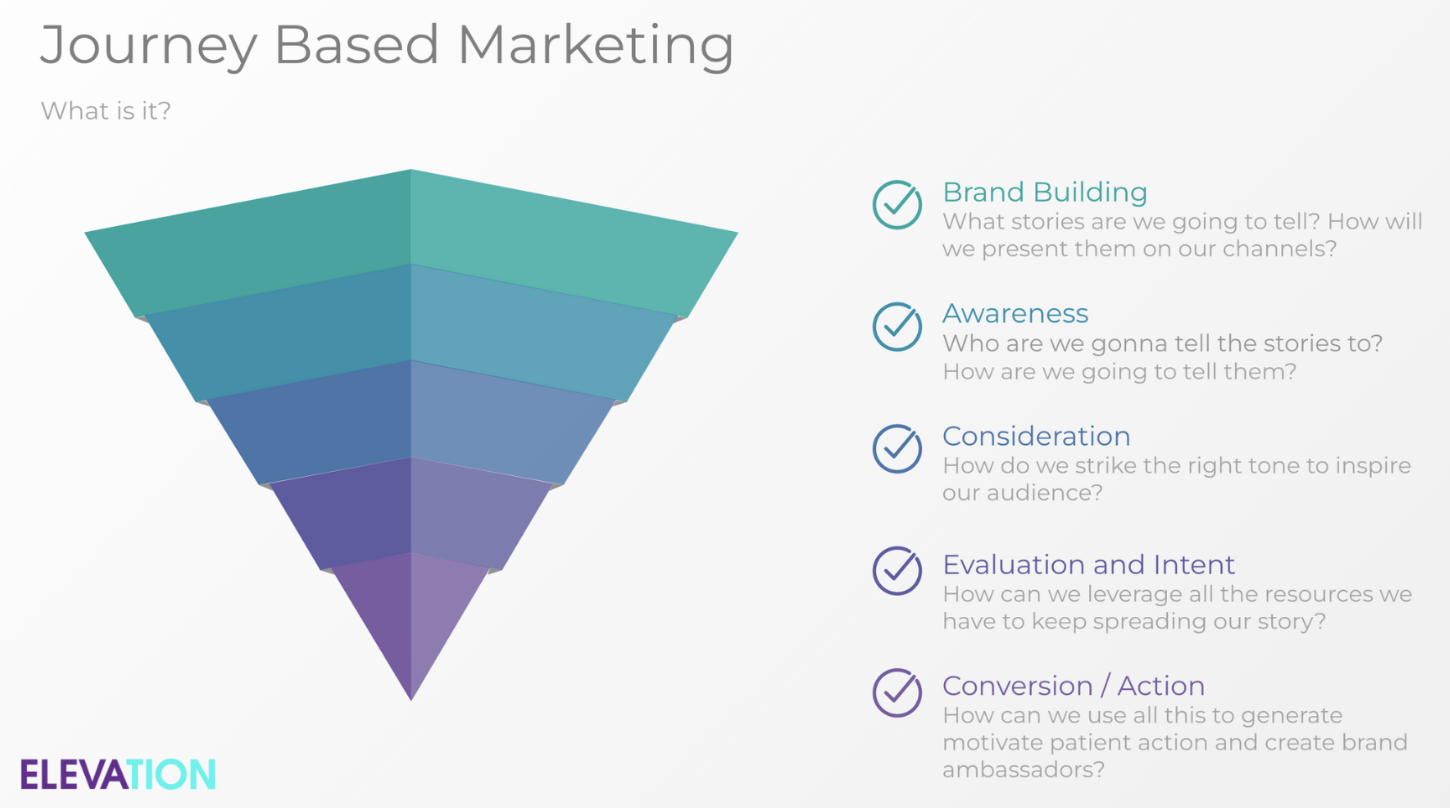Introduction
Marketing for nonprofits is more crucial than ever, as these organizations work tirelessly to achieve their missions and create positive social change. Just like their for-profit counterparts, nonprofits can benefit immensely from understanding and optimizing the marketing funnel. In this blog, we will delve into the concept of the nonprofit marketing funnel and provide you with valuable tips on how to create a healthy and effective marketing pathway. By the end of this read, you’ll be well-equipped to drive more impact and support for your nonprofit organization.
The Journey-Based Marketing Funnel for Nonprofits
- Brand Building: Crafting Your Narrative
The first stage in your journey-based marketing approach is brand building. At this point, you establish the foundation for your nonprofit’s identity. Determine what stories you want to tell and how you will present them across various channels.
Example: Consider an environmental nonprofit. They might focus on crafting a narrative that emphasizes the urgency of climate change, using powerful visuals and data-driven content to support their cause. This narrative sets the stage for all subsequent marketing efforts. - Awareness: Identifying Your Audience and Messaging
After defining your brand narrative, it’s time to target the right audience and craft messages that resonate with them. Your goal is to create awareness about your mission and the impact you seek to make.
Example: Imagine a nonprofit dedicated to providing clean water to underserved communities. In this stage, they identify their target audience, such as environmentally conscious individuals or corporate partners, and create messaging that highlights the water crisis and the need for clean water access. - Consideration: Inspiring Your Audience
In the consideration stage, your focus is on inspiring your audience. This involves using the right tone and content to engage and motivate them to learn more about your cause and become more deeply involved.
Example: For an animal welfare nonprofit, this means using heartwarming stories and informative content to inspire supporters to consider adopting, volunteering, or donating to the cause. - Evaluation and Intent: Leveraging Resources
Here, your nonprofit leverages all available resources to continue spreading your story. This includes optimizing your online presence, utilizing data analytics, and assessing the effectiveness of your marketing efforts.
Example: A youth education nonprofit might evaluate its digital marketing campaigns, learning which channels are most effective in reaching their target demographic and investing more resources in those channels. - Conversion/Action: Motivating Change and Creating Ambassadors
The final stage is conversion and action. In this phase, you aim to motivate your audience to take meaningful actions that support your nonprofit’s cause. This could include making a donation, volunteering, or becoming a vocal advocate, ultimately creating brand ambassadors who champion your mission.
Example: A healthcare nonprofit working to eradicate a specific disease might encourage supporters to not only donate but also participate in fundraising events, spread the word about the disease’s impact, and engage in grassroots advocacy.
Tips for a Healthy Nonprofit Marketing Funnel
Now that you’ve grasped the stages of the nonprofit marketing funnel, here are some invaluable tips to keep your funnel healthy and effective:
- Segment Your Audience: Tailor your messages to different donor personas. Consider the diverse interests and motivations of your supporters.
- Track and Analyze Data: Use analytics tools to monitor the performance of your marketing efforts at each funnel stage. Adjust your strategy based on what works best.
- Storytelling Matters: Storytelling can be a powerful tool in nonprofit marketing. Share impactful stories about your beneficiaries and how your organization is making a difference.
- Cultivate Donor Relationships: Maintain a strong relationship with your supporters. Regular communication and updates can help foster trust and loyalty.
- Leverage Automation: Consider using marketing automation tools to streamline your marketing efforts, from email campaigns to social media posting.
- Testing and Optimization: Continuously test different strategies, messaging, and channels. Optimize your funnel for better results.
Conclusion
Navigating the nonprofit marketing funnel is an essential endeavor for organizations dedicated to making a positive social impact. By following a journey-based approach, nonprofits can build a robust foundation for their marketing efforts. From brand building to motivating change, each stage plays a crucial role in driving awareness, engagement, and support for their missions.
The key takeaways from this discussion offer a roadmap for building a healthy path to success within the nonprofit marketing funnel. By segmenting your audience, tracking and analyzing data, and leveraging the power of storytelling, you can create compelling connections with your supporters. Cultivating donor relationships and embracing automation further enhance your organization’s ability to achieve its goals.
But remember, success in the nonprofit marketing funnel is an ongoing journey. Testing and optimization are vital for adapting to changing circumstances and ensuring that your funnel remains effective and efficient.
With these tips in mind, nonprofit organizations can maximize their impact, engage more supporters, and ultimately drive positive social change. So, as you embark on your marketing journey, remember that every step you take brings you closer to achieving your mission and creating a better world for all.




